Design of optical fiber transmission system for high speed Cameralink video signal
-
摘要: 针对目前常用的Cameralink视频信号的光纤传输方案系统结构过于复杂的问题,提出一种基于MAX9249/MAX9268的Cameralink视频信号的光纤传输方案。在发送端利用MAX9249实现Cameralink视频信号解串行化、编码、串行化,得到光模块驱动信号CML;在接收端利用MAX9268实现CML信号解串行化、解码、串行化,得到Cameralink视频信号,并对光收发模块的设计与选型作了详细阐述。用示波器抓取发送端和接收端高速串行信号的眼图,结果比较清晰,眼睛张开度大,发送端的Q因子为24.46,满足发送端大于12的要求,接收端Q因子为8.13,满足接收端大于6的要求。计算机采集的实时画面,经过10 min传输无明显可视的像素噪点,验证了该传输方案的可行性和有效性。
-
关键词:
- Cameralink信号 /
- 光纤传输 /
- MAX9249/MAX9268 /
- 光收发模块 /
- Q因子
Abstract: Aiming at the problem that the system structure of optical fiber transmission scheme of commonly used Cameralink video signal is too complicated, an optical fiber transmission scheme of the Cameralink video signal based on MAX9249 / MAX9268 was proposed.At the transmitting end, the Cameralink video signal was deserialized, encoded and serialized by using MAX9249 to obtain the optical module driving signal CML. At the receiving end, the CML signal was deserialized, decoded and serialized by using MAX9268 to obtain the Cameralink video signal, and the design and selection of optical transceiver module were detailed described.Finally, the oscilloscope was used to capture the eye diagrams of high-speed serial signals at transmitting end and receiving end. The eye diagrams of high-speed serial signals at transmitting end and receiving end are relatively clear and the eye opening degree is large. The Q factor at the transmitting end is 24.46, meeting the requirement of greater than 12 at transmitting end, while it is 8.13 at the receiving end, meeting the requirement of greater than 6. In addition, the real-time pictures acquired by the computer acquisition end has no obvious visible pixel noises after 10 minutes transmission, which proves the feasibility and effectiveness of the transmission scheme. -
引言
无透镜显微成像系统是一种不需要使用任何透镜聚光、直接使用成像传感器对物体进行成像的系统。传统显微镜成像分辨率较高(200 nm),但是视场较小(最大约为5 mm2)[1-3],与之相比,无透镜显微成像的优点在于结构简单,同时具有大视场。因此,现今许多研究都致力于利用无透镜显微成像系统进行细胞计数和疾病诊断[4-12],并将之直接集成为一个医疗器件[9, 11, 13]。但是无透镜显微成像系统存在分辨率低的问题,一般只有几十微米。现有的研究主要通过两种方式提高无透镜显微成像系统的分辨率:改进实验装置[14-16]和改善图像重构算法[16-19]。在改进实验装置方面,Mudanyali等人在待检测样品前插入1.1 μm起偏器,实现1.5 μm的成像分辨率[1];在改善图像重构算法方面,主要是将多幅图像进行叠层处理,从而提高分辨率。如Antonio等人[2]拍摄不同角度的样品图片,再使用快速鲁棒算法(SURF)和蚁群算法进行图像的叠层处理,获得了1.55 μm的图像分辨率,突破了实验所用complementary metal oxide semiconductor(CMOS)的分辨率极限(1.56 μm)。使用多幅无透镜叠层算法进行图像重构时,虽然能够达到甚至突破CMOS本身的分辨率极限,但与单幅的无透镜图像重构相比,增加了图像处理过程的复杂度,降低了成像速度。而国内对于单幅无透镜成像算法方面的研究也较多[20-26],但是单幅图像的分辨率都较低,如重庆大学张德燕等人[20]制作的集成型无透镜显微成像系统的分辨率为40 μm;陈云鹏等人[25]也搭建了无透镜显微成像系统,利用angle spectrum method(ASM)算法得到的分辨率为6.96 μm。虽然单幅无透镜显微成像系统的装置结构简单,但是分辨率仍需进一步提高。
由于文献[27]中,无透镜非相干成像使用了Lucy-Richardson(简称L-R)算法进行图像重构,因此,本文将对L-R算法做部分修改,将其作为无透镜相干成像重构算法的一种,并与ASM重构结果进行对比,从而确定最佳的单幅无透镜显微成像重构算法。结果表明,在本无透镜显微成像系统中,ASM重构图像的分辨率最高(即3.10 μm),运行时间最短(即0.9 s)。同时,本文进一步利用小鼠胚胎成纤维细胞(简称3T3细胞)对系统进行了验证。结果表明,所获得的图像分辨率介于5×与10×显微镜之间,且无透镜显微成像系统的视场比10×蔡司显微镜大16倍,比5×蔡司显微镜大4.4倍。因此无透镜显微成像系统在细胞观察/计数方面其统计学优势明显高于传统显微镜,在生物医学领域具有广阔的应用前景。
1 实验装置及算法原理
1.1 实验装置
本文的无透镜显微成像系统装置如图 1所示,由成像传感器CMOS、样品和光源组成。所用CMOS的型号为TP605100A,视场为24.4 mm2,空间分辨率为2 592×1 944像素,像素点大小为2.2 μm,帧速最快为60 fps,光源是中心波长为450 nm的蓝光LED。将实验中需要使用的样品置于光源与CMOS之间,光源距离CMOS 320 mm,样品与CMOS之间的距离约为1 mm。在进行图像拍摄实验时,将USAF分辨率板或包含细胞的计数板作为样品,当光源发出的光透过样品后,在CMOS表面发生衍射,由CMOS记录图像,获取无透镜拍摄的原图。
1.2 算法原理
L-R算法进行解卷积的原理如下:
1) 设物函数为object,物函数的振幅为objectAmp,⊗表示卷积,则
$$ \text { object }=\text { object } \mathrm{Amp} \cdot e^{i \varphi} $$ (1) (1) 式表示一个物体是由振幅objectAmp以及相位φ组成。
2) 经过空间中的传输,获取的图像Im(x, y)设定为物函数object(x, y)与点扩散函数PSF(x, y)的卷积,即:
$$ \operatorname{Im}(x, y)=\operatorname{object}(x, y) \otimes \operatorname{PSF}(x, y) $$ (2) 其中点扩散函数PSF为
$$ \begin{aligned} \operatorname{PSF}(x, y)=& \exp (\mathrm{j} k \sqrt{x^{2}+y^{2}+z^{2}}) / \\ &\left(\mathrm{j} \lambda \cdot\left(x^{2}+y^{2}+z^{2}\right)\right) \end{aligned} $$ (3) 式中:波数k=2π/λ;x, y为每个像素点对应的空间坐标;z为物和像之间的传输距离;λ为入射光波长。
3) 取迭代次数为i,i≥2,将获取的图像Im(x, y)赋值给obji(x, y),并将图像回传到物面,反推物函数,反推迭代公式如下:
$$ \begin{aligned} \operatorname{obj}_{i}(x, y)=&\left\{\left[\frac{\operatorname{Im}(x, y)}{\operatorname{obj}_{i-1}(x, y) \otimes \operatorname{PSF}(x, y)}\right] \otimes\right.\\ &\operatorname{PSF}(x, y)\} \cdot \operatorname{obj}_{i-1}(x, y) \end{aligned} $$ (4) 4) 迭代结果输出还原的物函数的强度图abs(obji(x, y))和相位图ang(obji(x, y))。
由于L-R算法在迭代的过程中有滤波模糊的作用,因此迭代次数不宜过多,否则图像丢失的信息增多导致图像模糊不清,因此本文只使用2次迭代。
ASM重构的原理如图 2所示,x0、y0所构成的平面为物平面,x1、y1所构成的平面为记录平面,物平面上存在某点P(x, y, 0),经过光照射后,P点在记录平面上的投影为P′(x, y, z)。设P点的振幅为U(x, y, 0),P′点的振幅为U′(x, y, z),P的空间频谱为A(fx, fy, 0),P′的空间频谱为A′(fx, fy, z)。fx是对应像素点的频谱横坐标,fy是对应像素点的频谱纵坐标。具体计算过程如下:
1) P′的振幅U′(x, y, z)可表示为
$$ \begin{aligned} U^{\prime}(x, y, z)=& \iint\limits_{\infty} A^{\prime}\left(f_{x}, f_{y}, z\right) \exp \left[\mathrm{j} 2 \mathtt{π}\left(f_{x} x+\right.\right.\\ &\left.\left.f_{y} y\right)\right] \mathrm{d} f_{x} \mathrm{d} f_{y} \end{aligned} $$ (5) 由标量衍射理论在平面波传播中的推导可得[28]:
$$ U^{\prime}(x, y, z)=\iint\limits_{\infty} A\left(f_{x}, f_{y}, 0\right) \times \\ \exp \left[\mathrm{j} \frac{2 \mathtt{π}}{\lambda} \sqrt{1-\left(\lambda f_{x}\right)^{2}-\left(\lambda f_{y}\right)^{2}}\right] $$ (6) 2) 对比(5)式和(6)式可得,P′的空间频谱A′(fx, fy, z)可表示为
$$ \begin{aligned} A^{\prime}\left(f_{x}, f_{x}, z\right)=& A\left(f_{x}, f_{x}, 0\right) \times \exp \left[j 2 \mathtt{π} \frac{z}{\lambda} \times\right.\\ &\sqrt{1-\left(\lambda f_{x}\right)^{2}+\left(\lambda f_{y}\right)^{2}}] \end{aligned} $$ (7) 3) 通过(7)式可得波传播的传递函数H可表示为
$$ H\left(f_{x}, f_{y}\right)=\exp \left[\mathrm{j} 2 \mathtt{π} \frac{z}{\lambda} \sqrt{1-\left(\lambda f_{x}\right)^{2}+\left(\lambda f_{y}\right)^{2}}\right] $$ (8) 4) 在离散条件下,再现物P点的空间振幅u(x, y, 0)可以表示为
$$ \begin{aligned} u(x, y, 0)=& I F T(F T(u(x, y, z)) \times\\ &\left.H\left(f_{x}, f_{y}\right)\right) \end{aligned} $$ (9) 同理,再现物P点对应的空间振幅u可输出物点的强度图abs(u(x, y, 0))和相位图ang(a(x, y, 0))。
2 实验结果
2.1 分辨率分析
图 3为无透镜显微成像系统拍摄的分辨率板原图及L-R算法重构后的结果。
由图 3(a)可得,无透镜拍摄原图的分辨率为12.40 μm(组5元素3),原图中组5元素4及后面的元素由于振铃效应,图中出现4条纹及或2条纹,因此需要使用重构算法来消除和减弱振铃效应,提高图像的分辨率。图 3(b)和图 3(c)是图 3(a)经过L-R算法重构后得到的振幅图和相位图。由图 3(b)可知,L-R算法重构所得振幅图分辨率为11.05 μm(组5元素4);由图 3(c)可得,L-R算法重构的相位图分辨率为6.96 μm(组6元素2)。由此可知,L-R算法重构时,在一定程度上减弱了振铃效应,提高了分辨率。
图 4为无透镜显微成像系统拍摄的原图及ASM重构的结果,其中图 4(a)是无透镜显微成像系统拍摄的原始图像,图 4(b)和图 4(c)分别为经过ASM重构所得的振幅图和相位图。由图 4(c)可知,相位图中的振铃效应没有任何改善,分辨率仍为12.40 μm(组5元素3);图 4(b)的振幅图在很大程度上减弱了振铃效应,使图像得到复原,但是具体分辨率仍需进一步分析。
为了对图 4(b)的分辨率做出科学的判断,本文将瑞利判据作为极限分辨率的判断依据。由于图 4(b)中组6元素及组7元素1已清晰可辨,本节将针对图 4(b)的组7元素2(竖向元素)、组7元素3(包括竖向元素和横向元素)和组7元素4(横向元素),取1行/列像素点(针对竖/横向元素),图 5(a)中分别用粗实线、粗虚线、细实线和细虚线4条画线表示。4条画线对应的像素点与灰度值的关系曲线分别如图 5(b)、(c)、(d)、(e)所示。对比图 5(b)~(e),根据瑞利判据,两个波峰相交的波谷对应的值所占波峰值的73.7%以下属于可分辨。由此可得:组7元素2和组7元素3(横向元素)可以分辨;组7元素3(竖向元素)和组7元素4不可分辨。因此无透镜显微成像系统结合ASM的方法,可以获得水平方向为3.48 μm(组7元素2)和垂直方向为3.10 μm(组7元素3)的分辨率。因此,ASM算法获得的振幅图分辨率为3.10 μm,即在本无透镜显微成像系统装置中,单幅图像的极限分辨率为3.10 μm。
综上所述,当使用L-R算法进行图像重构时,振幅图的分辨率为11.05 μm,相位图的分辨率为6.96 μm;ASM进行图像重构后,振幅图的分辨率为3.10 μm,相位图的分辨率12.40 μm。由此可得,ASM重构图像分辨率最高,为3.10 μm。同时,L-R算法的运行时间为3 h,ASM算法仅为0.9 s。因此,无论是在分辨率还是在计算用时方面,ASM都优于L-R算法,为最佳的单幅无透镜图像重构算法。由于一般细胞大小约为十几个微米,而本无透镜显微成像系统的极限分辨率为3.10 μm,因此可将无透镜显微成像系统替代传统显微镜进行细胞成像,实现细胞实时观察。
2.2 细胞观察
本节利用无透镜显微成像系统对小鼠胚胎成纤维细胞(3T3细胞)进行观察。图 6是无透镜显微成像系统拍摄的包含3T3细胞的细胞计数板图像及使用ASM重构后的结果。由于无透镜成像系统的视场大小取决于CMOS的成像面积,所以该系统的视场与COMS的视场大小一致,为24.4 mm2。使用10×蔡司显微镜(AxioCam MRc 5)的视场大小约为1.5 mm2,5×蔡司显微镜的视场大小约为5.6 mm2;使用分辨率板标定的10×蔡司显微镜的分辨率约为2.19 μm,5×蔡司显微镜的分辨率为3.91 μm。由此可得,无透镜显微成像系统结合ASM算法进行图像重构时,所得图像的分辨率介于5×与10×显微镜之间,且无透镜显微成像系统的视场尺寸比10×蔡司显微镜大16倍,比5×蔡司显微镜大4.4倍。在细胞计数方面,显微观察时视场越大,计数会更加准确(更具有统计学意义),因此在使用传统显微镜进行细胞计数时,一般选用低倍显微镜以获得大视场。本无透镜显微成像系统结合ASM所获取图像的分辨率比5×显微镜高,同时视场是5×显微镜的4.4倍,因此无透镜显微成像系统在细胞观察/计数方面其统计学优势高于传统显微镜。除此之外,该无透镜显微成像系统结构简单,经过光学设计后,其高度可减小为十几个厘米,更有利于将其放入CO2细胞培养箱中,对细胞的生长进行实时观察,并集成为便携式医疗器械。
3 结论
本文介绍了一种无透镜显微成像系统,并针对单幅无透镜显微图像的重构算法进行研究,分别使用了L-R和ASM两种算法进行图像重构。其中L-R算法重构所得的振幅图分辨率为11.05 μm,相位图分辨率为6.96 μm,运行时间3.0 h;ASM算法获得的振幅图分辨率为3.10 μm,相位图分辨率12.40 μm,运行时间0.9 s。因此,无论是在分辨率还是在计算用时方面,ASM均为最佳的单幅无透镜显微重构算法,单幅图像的极限分辨率为3.10 μm。同时利用无透镜显微成像系统结合ASM重构的方法,对小含有鼠3T3细胞的细胞计数板进行显微成像。所获得的无透镜图像分辨率介于5×与10×显微镜之间,同时视场是5×显微镜的4.4倍。因此无透镜显微成像系统在细胞观察/计数方面优于传统显微镜,统计学优势明显。本文无透镜显微成像系统结合ASM算法进行图像重构的方法,不仅能够实现更高的分辨率,还具有更大的视场,在生物医学领域具有广阔的应用前景。
-
-
[1] 王会川, 曹战民, 王恒运.光纤制导双向传输系统[J].应用光学, 2001, 22(5):19-24. doi: 10.3969/j.issn.1002-2082.2001.05.006 WANG Huichuan, CAO Zhanmin, WANG Hengyun. Bidirectionalt optical fiber transm ission system[J].Journal of Applied Optics, 2001, 22(5): 19-24. doi: 10.3969/j.issn.1002-2082.2001.05.006
[2] 吴静, 商海英, 韦正世.光纤制导技术及器件的发展研究[J].光纤光缆传输技术, 2006(4):7-11. https://www.ixueshu.com/document/8cf22ca0d0b02d34f2a3bae2519e1d5c318947a18e7f9386.html WU Jing, SHANG Haiying, WEI Zhengshi. Devlopment of fiber optic guidance technologies and Devices[J].Optical Fiber& Electric Cable, 2006(4):7-11. https://www.ixueshu.com/document/8cf22ca0d0b02d34f2a3bae2519e1d5c318947a18e7f9386.html
[3] 顾畹仪, 李国瑞.光纤通信系统[M].北京:邮电大学出版社, 2006. GU Wanyi, LI Guorui. Fiber communication system[M]. Beijing:Post and Telecommunication University Press, 2006.
[4] 郭玉斌.光纤通信系统[M].西安:西安电子科技大学出版社, 2008. GUO Yubin. Fiber communication system[M]. Xi'an: Xidian University Press, 2008
[5] 许海东, 王剑, 李超.基于FPGA的数字视频光纤传输系统的研究[J].科学技术与工程, 2007(19):5069-5073. doi: 10.3969/j.issn.1671-1815.2007.19.065 XU Haidong, WANG Jian, LI Chao. The design of fiber transmission of camera link based on FPGA[J].Technology and Engineering, 2007(19):5069-5073. doi: 10.3969/j.issn.1671-1815.2007.19.065
[6] 李宁, 汪骏发.基于Camera Link的高速数据采集系统[J].红外, 2005 (7):31-37. doi: 10.3969/j.issn.1672-8785.2005.07.007 LI Ning, WANG Junfa. The design of high speed data acquisition based on camera link[J]. Infrared, 2005 (7):31-37. doi: 10.3969/j.issn.1672-8785.2005.07.007
[7] 千应庆, 裴宇森, 孙偲晟.基于时分复用的Cameralink高清视频光纤传输技术[J].光通信技术, 2010, 34(10):54-56. doi: 10.3969/j.issn.1002-5561.2010.10.017 QIAN Yingqing, PEI Yusen, SUN Sisheng. Fiber optical transmission of Cameralink high-speed video based on TDM[J]. Fiber Communication Technoplogy, 2010, 34(10):54-56. doi: 10.3969/j.issn.1002-5561.2010.10.017
[8] 张达, 徐抒岩.高速CCD图像数据光纤传输系统[J].光学精密工程, 2009, 17(3):669-674. doi: 10.3321/j.issn:1004-924X.2009.03.032 ZHANG Da, XU Shuyan. High speed CCD picture data optical transmission system[J].Optic Precise Engineering, 2009, 17(3):669-674. doi: 10.3321/j.issn:1004-924X.2009.03.032
[9] 曹伟军, 袁泉. Cameralink图像数据光纤传输技术[J].光通信技术, 2014, 7(2):44-45. doi: 10.3969/j.issn.1002-5561.2014.02.014 CAO Weijun, YUAN Quan. Optical fiber transmission technology of Cameralink image data[J].Fiber Communication Technoplogy, 2014, 7(2):44-45. doi: 10.3969/j.issn.1002-5561.2014.02.014
[10] 何家维, 何昕, 魏仲慧.高速CameraIink图像数据光纤传输系统设计[J].信息技术, 2011, 10(04):9-12. HE Jiawei, HE Xin, WEI Zhonghui. Design of fiber transmission system for Cameralink interface standard[J].Information Technology, 2011, 10(04): 9-12.
[11] 孙科林, 周维超, 吴钦章.高速实时光纤图像传输系统的实现[J].光学精密工程, 2011, 19(9):2228-2234. http://d.old.wanfangdata.com.cn/Periodical/gxjmgc201109032 SUN Kelin, ZHOU Weichao, WU Xinzhang. Realization of high speed real time optical picture transmission system[J]. Optic Precise Engineering, 2011, 19(9):2228-2234. http://d.old.wanfangdata.com.cn/Periodical/gxjmgc201109032
-
期刊类型引用(1)
1. 王江涛,王艳红,武京治. 基于散射元件的无透镜偏振成像系统设计. 激光与光电子学进展. 2020(06): 265-270 .  百度学术
百度学术
其他类型引用(1)




 下载:
下载:





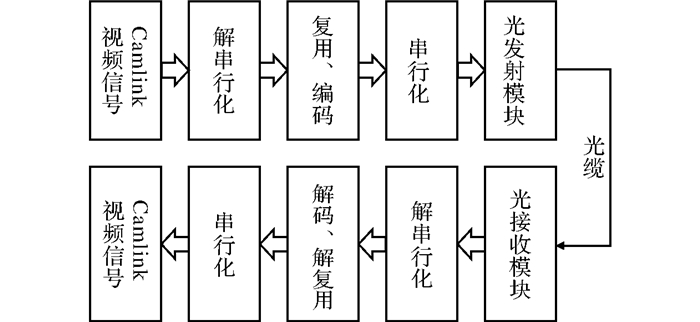
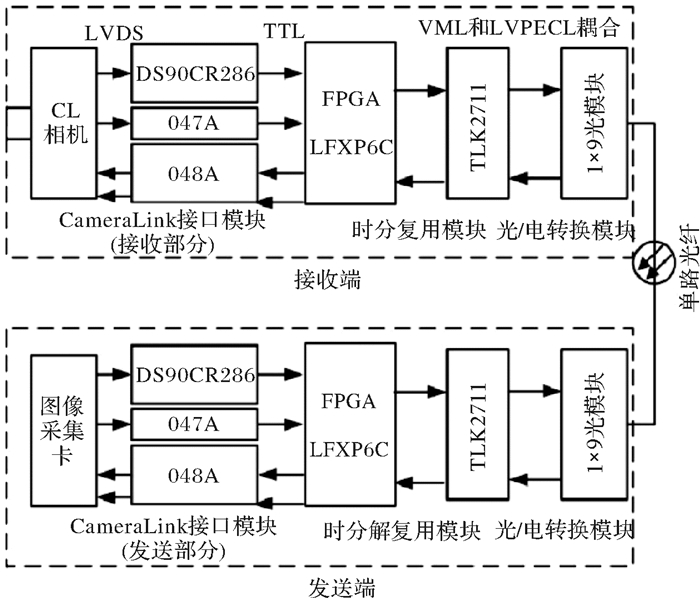
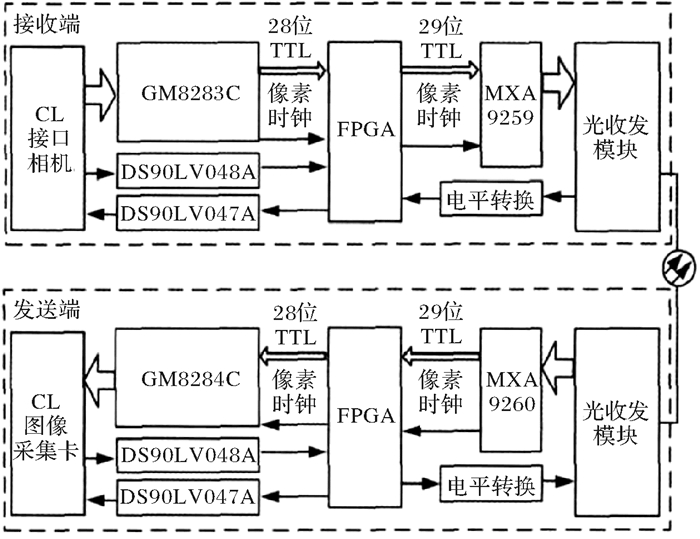
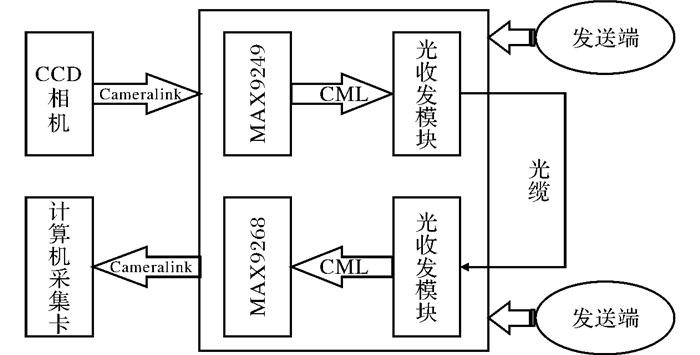
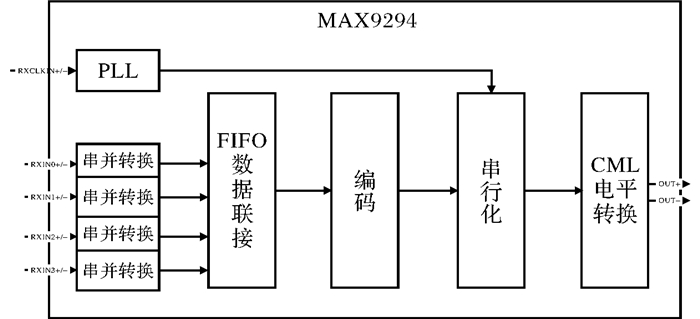
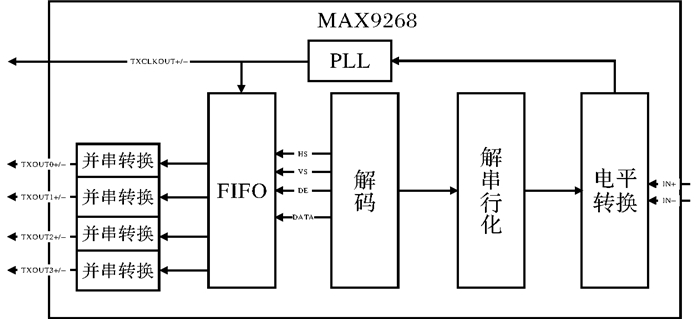

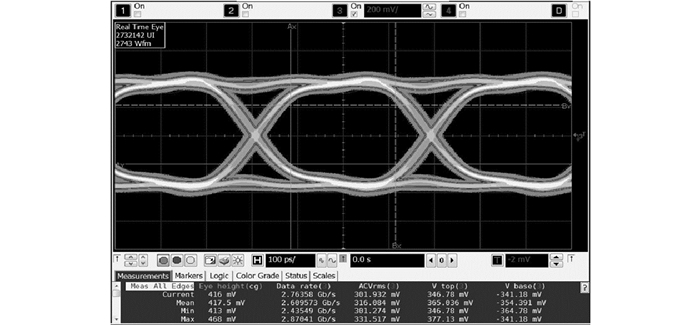
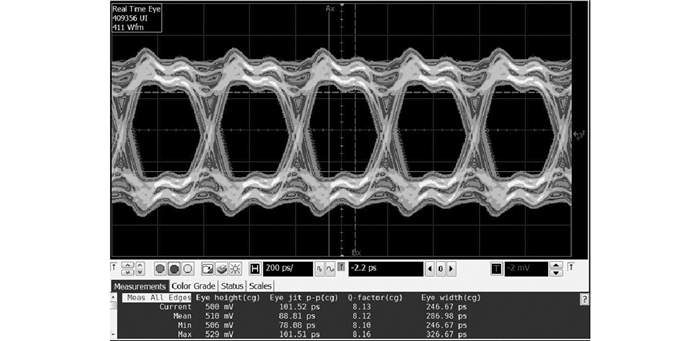
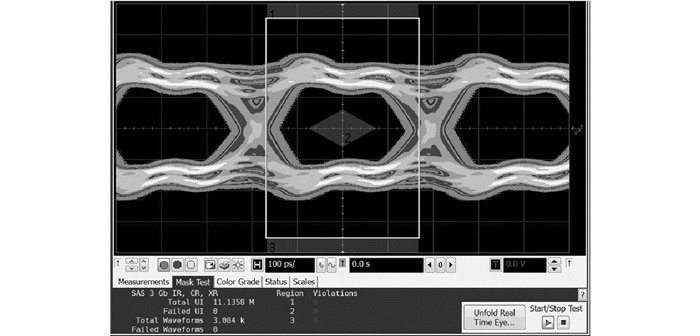
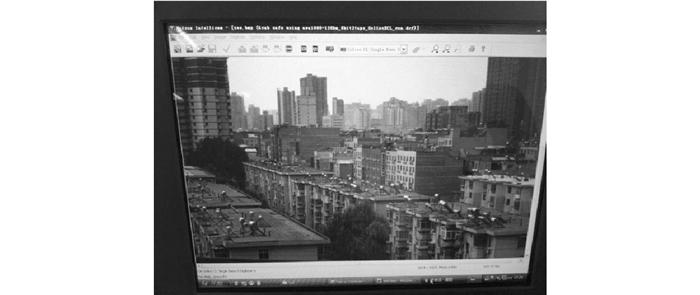

 陕公网安备 61011302001501号
陕公网安备 61011302001501号 